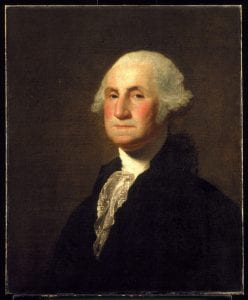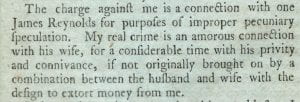
By:Rahmel Bailey
For my historical document, I decided to research the Hamilton-Burr Duel Correspondence letters. The collection of letters were written by Hamilton and Burr, and mark the very last documents that they sent one another before attempting to settle their notable rivalry. I found the documents on Wikisource, the letters are also available in the public domain. I was drawn into the battle of Hamilton and Burr because I had some knowledge on their rivalry from history class. I knew that Hamilton was selected over Burr to serve as Treasurer under George Washington and that the two had different viewpoints. However, I had no idea their feud cost Hamilton his life. (They didn’t mention that on the ten dollar bill.) I believe the documents are essential to understanding the life of Hamilton because he made the choice to risk his life, leave his wife and children in all to bring destruction to his political opponent. Hamilton was an intelligent man, therefore he must have an adequate explanation for the duel. Furthermore, it is important to research because the account of the actual battle is also unclear.
To me, the duel is important because in the play Hamilton is compared to Black and brown people. Similar to many revolutionaries of color in this country he lost his life at the hands of a bullet. In order to figure out the reasoning for Hamilton to participate in the battle, I need to research.

The document takes places long after the Revolutionary War and after Hamilton served as Treasurer, their feud had been going on for over a decade. Becuase the documents give insight at the end of their rivalry, the relationship between Hamilton and Burr have to be acquired at different points before then. To bring the document to life, the entire field must be understood. Some examples of things that must be understood prior are that talks of a duel between the two were not first established in the letter. I have been researching the story behind the battle by mainly reading other related documents, like those from the messengers of the letters, and by learning about the less violent attacks that pushed the duel to take place. I have been trying to get the background through finding relative primary documents. There were many things that pushed Burr and Hamilton to the battle, one primary influence were outsiders. A newspaper editor pushed for Burr to challenge Hamilton to a duel in the paper. Also, Charles D. who insulted Burr is actually mentioned in the letters.
The biggest challenge of the research is to find as many relevant primary documents as possible in order to get a first-hand look at the events and opinions surrounding the duel. Moving forward I will try to read online encyclopedia annotations to find primary documents.












